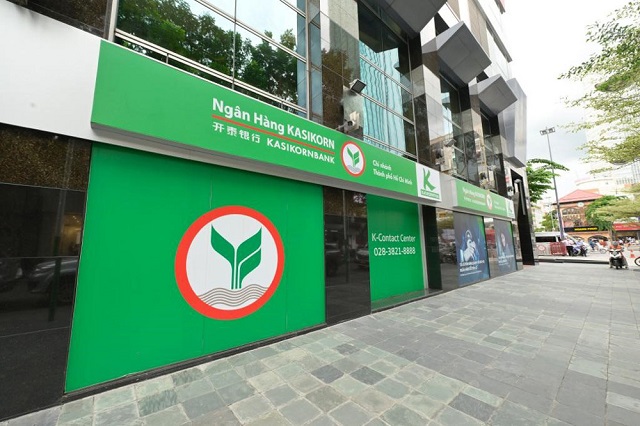Banks juggle bancassurance quandary
Banks juggle bancassurance quandary
Some Vietnamese commercial banks have reported a dramatic dip in their bancassurance sales for the first half of the year as the sector navigates controversies and a historically low number of active life insurance contracts.

The first half of this year saw many top banks in Vietnam experience a significant reduction in their bancassurance sales figures, recording drops of at least half compared to the same period the previous year.
Fresh figures from Vietnam International Bank (VIB) showed that cross-selling insurance commissions for the first six months plummeted by nearly half to $13.29 million. Similarly, TPBank and Techcombank reported a decline of over half in insurance-related revenues, recording figures of $9.28 million and $12.24 million, respectively.
SeABank experienced an even steeper decline, at 80 per cent, with its bancassurance income dwindling to $1.94 million.
This decline comes amidst a challenging phase for bancassurance, following numerous complaints from the public and intensified inspections from the Ministry of Finance (MoF).
Previously, the domestic market has witnessed several billion-dollar collaborations between banks and insurance companies.
Notable agreements include VPBank and AIA, Sacombank with Dai-ichi Life, Vietcombank and FWD, both ACB and TPBank partnering with Sun Life, MSB joining forces with Prudential, and VIB aligning with Prudential.
However, after a prolonged period of controversies, particularly issues where customers’ savings were inadvertently channelled into life insurance purchases, the revenue from insurance services of some entities has started to show signs of decline.
Pham Thu Phuong, deputy director of the Insurance Supervision and Management Department under the MoF, expressed concern over the prevailing challenges in the life insurance market.
“These issues contravened the very humanitarian essence of life insurance, undermining the confidence of policyholders,” she said. “Despite the sector boasting an annual growth of 20 per cent, the actual quality of services and development has not aligned with its expansion.”
Phan Duc Hieu, a standing member of the National Assembly Economic Committee, noted, “Consultation service quality remains a primary concern. Insurance entities must prioritise and enhance their service delivery.”
However, after a period of rapid growth, this sales channel is now undergoing more transparent adjustments. Several privately held banks have, since the second quarter, shifted their approach to key performance indicators, taking the pressure off employees to sell insurance.
The recent crisis has spurred both banks and insurers to reconsider their bancassurance strategies. The market is currently facing its toughest period, but insurance leaders believe there could be a silver lining.
Phuong Tien Minh, CEO of Prudential Vietnam, said, “Bancassurance channels have various areas to improve following the explosive growth of the past. Insurers and banks have amassed tremendous lessons over the past seven years.”
Previously, very few bancassurance partnerships in the market were willing to commit to contract retention rates. Overlooking this crucial checkpoint, experts believe, was a primary factor contributing to the overheated and skewed development of bancassurance in recent times.
An industry insider said that asking banks to commit to such a target was always challenging. “We even risked losing potential collaborations with several banks due to their insistence on a minimum contract retention rate during cross-selling,” the expert told VIR.
On the other hand, one of the few banks in the market committed to a contract retention rate during cross-selling is Sacombank.
Nguyen Duc Thach Diem, CEO of Sacombank, said it was committed to a minimum second-year contract retention rate from the very outset of their partnership with Dai-ichi Life. “It has been integral from the early days of our collaboration and is a prerequisite that dictates most of our insurance business activities,” she said. “While many banks in the market have a second-year contract retention rate of around 60-70 per cent, and some even as low as 30 per cent, Sacombank boasts a rate nearing 90 per cent as of the end of 2022. This indicates that 90 per cent of customers purchasing insurance through the bank continue their participation in subsequent years.”
Some banks are proactively seeking different bancassurance partnership strategies amidst the industry’s chaos. In May, the partnership between Prudential and VIB, which extends the alliance to 2036, was heralded as a “next-generation” bancassurance contract. For the first time, it introduces market commitments focused on sales quality.
“Signifying a steadfast commitment from both entities, this collaboration seeks to meet actual needs by aligning sales to demand,” said Minh of Prudential. “We have established a Customer Conduct Standards Committee with VIB. This ensures both parties maintain consistent behaviour standards during customer complaints, streamlining complaint reviews, and setting standards for customer consultation and care.”
According to data from the Insurance Association of Vietnam (IAV), by the end of June, the total number of active life insurance contracts – the primary product in the market – stood at 13.35 million. This marks a decrease of approximately 550,000 contracts from the start of the year. This is the market’s first decline since 2014.
The association believes that this drop could be attributed to the most significant “crisis of confidence” the sector has ever experienced. This led to a 31 per cent decrease in new contracts across the market in the first half of the year, dropping to just over one million contracts.
Within this scenario, the number of insurance contracts sold through banks registered a decline in units. Traditional agents from top firms faced challenges approaching new clients. Several advisors turned to friends and relatives to sell low-value insurance products to meet targets, diverging from their prior focus on investment-linked insurance.
Furthermore, roughly 1.5 million contracts were either cancelled by customers or became inactive during these six months. This figure encompasses those who proactively terminated their contracts, halted their payments ahead of schedule, or whose contracts simply reached their payment expiration.
The total life insurance premium revenue for the market in the six-month period also saw a decline, dropping almost 8 per cent from the same period the previous year, amounting to approximately $3.28 billion. New business revenue plunged by 38 per cent, estimated at $653.6 million.
The first half of this year also witnessed significant upheavals in the market share of new business. Manulife, having led in new sales for two consecutive years, now ranks third.
For the first half of the year, Prudential topped the new insurance premium revenue chart with $115.6 million, followed by Dai-ichi Life at $86.3 million. In terms of cumulative insurance premium revenue, Bao Viet Life leads with 20.6 per cent of the market share, followed by Manulife at 17.2 per cent.
The IAV also reported that insurance company payouts for the first half of 2023 were estimated at $1.09 billion, a rise of 37 per cent compared to the same period the previous year.




























